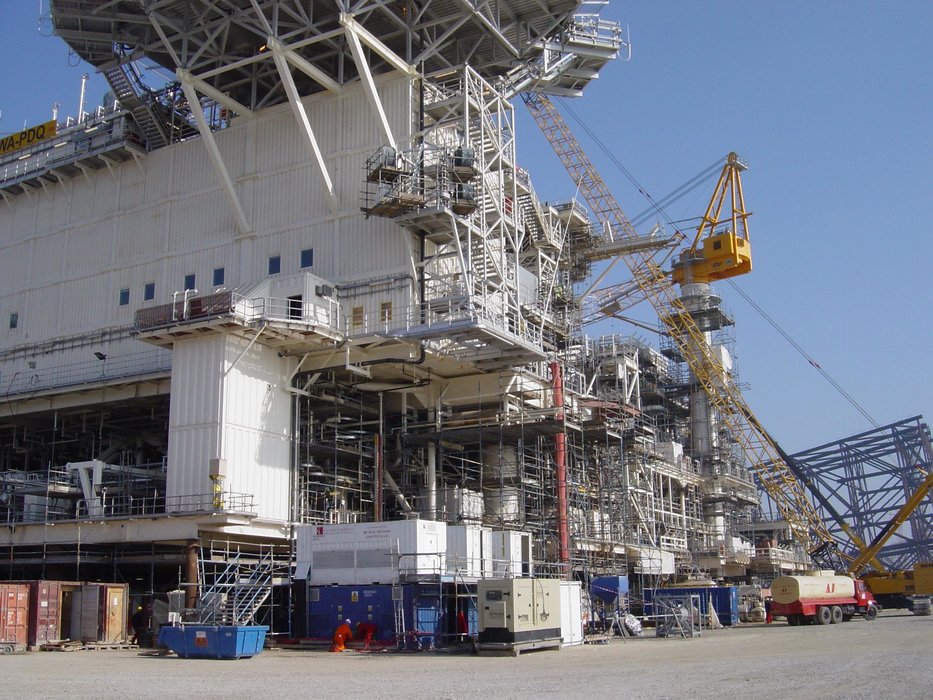www.industrymiddleeast.com
21
'13
Written on Modified on
Reactive or resistive: optimising testing for offshore power generation supplies

Offshore independent power generation installations often involve complex systems comprising gas turbines, diesel generators, DC battery and UPS arrangements, which support platforms, rigs and floating production, storage and offloading (FPSO) vessels many hundreds of miles offshore. Ensuring the availability of power for production, life support systems and in some cases propulsion is a critical function in such remote and inhospitable conditions.
What is the need for testing?
While some systems have a degree of interdependency, most incorporate various levels of redundancy, which in normal running conditions involves the efficient power management of several duplicate size generators. The correct and comprehensive testing of these systems at the commissioning stage is vital to ensure trouble-free production, efficient power generation and the safety of personnel. The same principle of system testing applies to the commissioning and testing of back-up emergency systems.
Any offshore power generation unit is a complex system, or series of systems, working together to perform several duties at once and at the system’s heart is the generator. This could consist of several gas turbines and/or diesel generators. However, various discrete systems and components complete the total package, such as alternators, regulators and switchgear.
These additional components typically come from various manufacturers, and are usually designed to interface with a number of makes, models, and sizes of generators. As with any other mechanical or electrical components, all are potentially subject to failure, and have varying maintenance needs, at the very least requiring regular testing and servicing. However, individually testing a series of components never answers the most important question of all: “How do you know that your system—and not merely its components—will work when it counts?” In an actual emergency, a platform or FPSO’s entire emergency power generation system will be stressed. Unlike in a series of short, component-by-component tests, the system must operate at full power, with all components working together to do their jobs. The stresses introduced by this mode of operation cannot be simulated by discrete tests of a system’s numerous individual components: automatic transfer switches, switchgear, load-sharing centres, voltage regulators, alternators, electrical cabling and connectors, ventilation, cooling systems, and fuel systems.
While the generators may have been tested at the factory, the installation variables of the interaction with other parallel-connected power generation units (UPS), load profile, ambient temperature, humidity, fuel, exhaust, and cooling systems can be significantly affected by the installation.
Therefore, a system-wide test is the only way to ensure that the individual components of any power generation system will work together harmoniously, whether for continuous production demands, or in an emergency power outage situation.
The limitations of resistive-only testing
Sometimes commissioning engineers may only consider testing their generator engine(s)/turbine(s), rather than the whole system. The most common form of testing is using a resistive load bank to run the prime mover, connected at the generator’s bus. However, this fails to replicate the actual stresses produced during real-world generator operation.
A resistive-only loadbank provides an electrical load (at unity power factor) which when applied to a generator converts and dissipates the resultant generated power as heat. This electrical loading will highlight individual engine/turbine problems. Unfortunately, resistive loads are usually only a small part of any platform’s total power consumption. Quite often, the influence of a lagging power factor (pf) <0.8 due to reactive loads is underestimated or even ignored.
Generally the only equipment operating on a resistive-only load are incandescent lights and electric heaters; these units draw a steady supply of electricity from a generator, but do not produce the large block loads that truly test a generator’s performance. A resistive load test will verify that a generator’s prime mover is working, but it will not identify how well it will actually perform when exposed to the real reactive load pattern.
R+R – the role of resistive and reactive testing
A reactive load test of an installation’s power system can accurately simulate the system’s response to a changing load pattern, such as would be encountered during a real power failure.
Resistive/reactive combination load banks are used to test the engine/turbine generator set at its rate pf. In most cases this is 0.8 pf. The reactive component of the load will have a current that “lags” the voltage. The resulting power is described in two terms, the kW, or real power, and the kVA or apparent power. The combination of resistive and reactive current in the load will allow for the full kVA rating of the generator windings to be tested. Even though the genset is producing more kVA, it is actually not producing more kW. The “real” power (kW) required from the engine/turbine is essentially the same.
The inductive loads developed during reactive testing illustrate how any given system will handle the voltage drop in its regulator; paramount when paralleling generators. The test will also verify that this regulator is working properly, if not, its magnetic field could collapse, rendering the generator useless and preventing other generators in the system from operating efficiently in parallel. Resistive/reactive testing can also reveal additional stresses (and predict pending failures) of a system’s switchgear, alternators, and other systems that resistive-only testing cannot.
It is clear that a procedure involving reactive as well as resistive testing is far more comprehensive and thorough than a resistive-only test, more accurately replicating the conditions likely to be faced in a real power outage, and so more readily identifying any potential source of the problem. Carefully managed reactive/resistive testing is therefore the only way to guarantee the operation of emergency power systems.
Use of loadbanks offshore
Commissioning aside, which is invariably performed onshore, loadbanks do have other uses on production platforms and FPSOs. Permanently installed loadbanks allow for comprehensive testing to be integrated into the maintenance procedures of emergency systems in particular. Oversized generators can be cleared of any carbon build-up with regular sessions of full load application, ensuring reliable performance when called upon for particular production cycles or an emergency.
The role of loadbanks can go beyond just testing. Should an installation suffer a major component failure, such as a large compressor, which would normally provide the turbine-based generators with significant load, a loadbank can be used to provide increased electrical loads to enable the turbine to operate at its optimum efficiency. Often, the loss of load prevents some turbines from operating at levels whereby sufficient heat/steam is produced for other production purposes. While there may be sufficient compressor capacity, other processes may not function properly with the reduced load at the turbine. A loadbank can provide a short-term solution until such time as the component failure is addressed.


